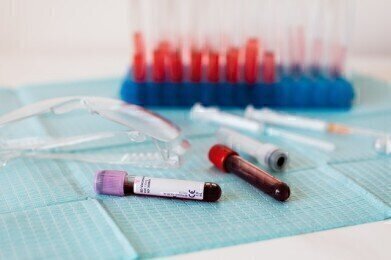News
What Are the Stages of Blood Sample Processing?
Oct 04 2021
Blood samples can unlock incredible insight into how well an organism is functioning. Samples are used to diagnose a myriad of conditions and diseases, including cancer, diabetes, anaemia, HIV/AIDS, heart disease and more. To improve the reliability and accuracy of data, it’s important for clinicians and lab technicians to follow best-practice guidelines when processing blood samples. Read on to find out more about the key steps involved and what measures are used to safeguard the integrity of samples.
-
Preparing the patient
A good blood sample starts with good patient preparation. Specimens should be collected when the patient is in a basal state, meaning the body and metabolism are in resting phase. Ideally, this means collecting samples early in the morning shortly after the patient has woken up, or between 12 to 14 hours after ingesting food. Exercise should be avoided as this can trigger a spike in serum proteins, blood glucose, lactic acid and creatine kinase which can affect sample quality.
-
Collecting the specimen
Blood sample collection protocols can vary between clinics, though all practices should adhere to basic health and safety rules. The World Health Organisation (WHO) has released clear guidelines on best practices in phlebotomy, with a focus on training staff, planning ahead and developing a detailed understanding of the factors that can affect specimen quality.
Taking steps to avoid haemolysis, which sees red blood cells breakdown and release haemoglobin into the sample, is important. This can be done by using the correct needle size and warming up the puncture site before inserting the needle.
-
Processing the specimen
Clear labelling is essential, as this ensures the sample doesn’t get lost or mixed up during the processing stage. Once collected, the sample should be stored at room temperature in an upright position for between 15 to 30 minutes, a step that helps minimise the risk of haemolysis. After the initial room temperature storage phase is over, the sample should be moved to a 4°C environment.
A variety of techniques and technologies may be used to analyse samples, including blood chemistry analysers used to identify and quantify components in the sample. Specialised hematology analysers are used to count red and white blood cells, as well as calculate haemoglobin, haematocrit and blood platelets levels. Data is used to detect a wide range of medical conditions, including respiratory disorders, anaemia, allergies and cancerous tumours.
The role of biobanks
Once data has been extracted, blood samples are either discarded or transported to a purpose-built biobank. These specialised biorepositories are fundamental to medical research and offer scientists access to high-quality biosamples. Unfortunately, many independent pharmaceutical and biotechnology companies struggle to secure high-quality samples. Welsh-based company Biosample Hub is on a mission to address the issue, with founder Robert Hewitt introducing the game-changing platform in ‘The challenges of biosample access and what needs to change’.
Digital Edition
Lab Asia Dec 2025
December 2025
Chromatography Articles- Cutting-edge sample preparation tools help laboratories to stay ahead of the curveMass Spectrometry & Spectroscopy Articles- Unlocking the complexity of metabolomics: Pushi...
View all digital editions
Events
Jan 21 2026 Tokyo, Japan
Jan 28 2026 Tokyo, Japan
Jan 29 2026 New Delhi, India
Feb 07 2026 Boston, MA, USA
Asia Pharma Expo/Asia Lab Expo
Feb 12 2026 Dhaka, Bangladesh



















